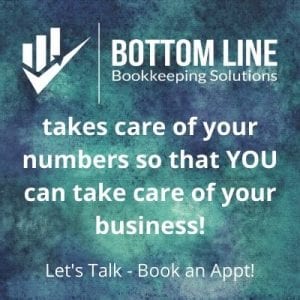 Your business has excellent sales, but what does that mean for your bottom line? You would think that great sales mean that a business is profitable, but that is not always the case.
Your business has excellent sales, but what does that mean for your bottom line? You would think that great sales mean that a business is profitable, but that is not always the case.
Let’s start with what the Bottom Line means in business.
The short of it is that it is the profits your company makes. In accounting terms, the bottom line is the net income, after all the costs of goods sold (COGS), expenses, and overhead has been subtracted.
5 Strategies to Improve Your Bottom Line
A lot goes into determining and improving your business. These strategies can work for companies of all sizes.
Strategy 1: Look at Your Pricing
When is the last time you had an increase in your pricing strategy? I was recently working with a client who owned a Golf aeration company that had not increased its prices for over five years. We decided to increase prices by 10%. This resulted in a direct 10% increase in the bottom line because there were no additional expenses associated with this increase.
Strategy 2: Look at Your Expenses
When is the last time you took a look at all the money going out of your business? I had a client once who had about $200 a month in automatic charges hitting her credit card that she forgot all about—canceling that added $2400 to the bottom line.
Another thing to look at is the costs associated with delivering your products and services. Be careful not to fall into the trap of thinking that it has always been done this way, so it must continue to be done this way.

Strategy 3: Look at Team/Staff Productivity
Are your employees productive in their roles, or are they wasting a lot of time? If there is not enough work to support the team, you either have to increase sales or reduce the salesforce. However, be mindful not to overburden your staff with extra work unnecessarily. It’s a tight balance to keep everyone happy and everything running smoothly.
Also, it would be wise to take a look at the possibility of outsourcing. I built a substantial coaching business with a completely outsourced team.
Strategy 4: Look at Your Accounts Receivable
Do you run an Accounts Receivable aging report regularly? Most of my clients find it shocking how old some of their receivables have been on the books. If it takes you on average 60 days to collect most receivables, think about what it would do for your bottom line if you were able to shorten that to 45 days. This usually only means having a team member focus on collecting them.
While we are talking about A/R, it would also be helpful to look at your uncollectables. How much is your business writing off each year? This is hugely important. Let’s say you bill a client $5,000 for a project. Your cost to provide the service is $3,000. If that client doesn’t pay the invoice, you spent $3,000 of your own money. Be sure you work diligently to collect receivables.
Strategy 5: Increase Sales and Marketing
Notice I didn’t start with this one. Most business owners think I need to sell more and I can’t disagree but I wanted you to see there are a lot of things to look at when it comes to your bottom line.
I am often amazed that small business owners do not have a focus on sales. They wait for sales to come to them instead of going out to get them. Is your sales team making their best effort reaching out to leads or making cold calls?
Is your marketing producing leads for the team to follow-up on? Are your ads reaching your target customers? Consider other ways to improve sales like a reward card, reviews, and referrals.
Improving your bottom line is something a business should consistently evaluate and improve on. It will not improve in one day, but even slight improvements in the cost of doing business can help improve given time to let the changes take effect and results seen.




